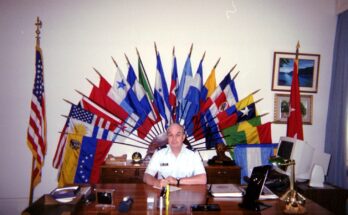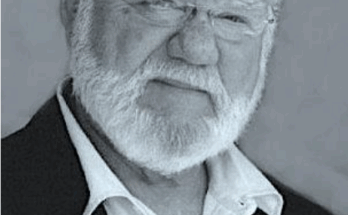The Air Force Life Cycle Management Center located at Wright-Patterson Air Force Base near Dayton, Ohio is a large organization of military, civil service, and contractors responsible for the design, testing, selection and initial procurement for all Air Force “air breathing” systems. Everything except ICBMs.
In the early 80s, one of their biggest programs was the development of the air launched cruise missile. A joint USAF and Navy program. The design phase was completed and testing began. Two contractors, Boeing and General Dynamics, were tasked to fly ten missiles each for Air Force evaluation. In each test flight, a B-52 would launch the missile over the Pacific. The missile made landfall over the California coast then continued to the Utah Test and Training Range to hit its target. A flight of over 1500 miles, sometimes as low as 50 feet, while being followed by an F-4 chase plane. At an average speed of 450 mph these tests took as long as three hours. The F-4 chase plane had the ability to activate the destruct package aboard the missile if it malfunctioned or went off course.
Boeing’s AGM-86B and General Dynamic’s AGM-109 shared the same engine and guidance system. The small Williams International turbofan engine produced 650 lbs of thrust. More than enough for subsonic cruise. The guidance system was known as “TERCOM”, for Terrain Contour Matching. The missile’s on-board computer compared the scene below to a previously loaded map of the flight path. It continually centered itself on the map as the map became smaller and smaller approaching the target. An improved version of that system is being used today.
Boeing won the competition. The Air Force eventually purchased 2117 Boeing ALCMs. The loser, General Dynamics, was selected to build the Ground Launched Cruise Missile which the Air Force later deployed to six locations in Europe. The “GLCM” was the same General Dynamics missile used during the air launched test with a rocket booster added to propel it from its ground location to the proper altitude and speed to begin cruise flight.
The Navy selected the General Dynamics missile to be its conventionally armed Tomahawk cruise missile still being used today. In its non-nuclear role, the Tomahawk carries approximately 1000 lbs of high explosive.
With the Reagan administration pumping tremendous funds into the defense budget, often unrequested, the cost of the ALCM program was not a consideration. Each missile cost around $4 million and each W-80 nuclear warhead around $8 million. The W-80 was referred to as a “dial-a-yield” nuclear warhead. It could be adjusted prior to launch to produce either a 5 KT explosion or a 150 KT explosion. Later, when some nuclear warheads were removed and replaced by conventional high explosives, questions were raised about using a multi-million dollar missile to deliver a one thousand pound bomb.
Our B-52 is the only airplane to carry the ALCM. It can carry 20. Six under each wing on a huge 40 foot long pylon and eight internally on a “rotary launcher” inside the bomb bay. The rotary launcher operates much like the cylinder on a handgun. As the launcher rotates, the missile at the bottom is dropped. Neither of our two newer bombers, the B-1 and the B-2, can carry the ALCM.
On 1 June, 1988 President Reagan and Premier Gorbachev signed the Intermediate Range Nuclear Forces Treaty, previously ratified by the U.S. Senate. The treaty eliminated 2692 mid-range nuclear missiles, including six types of Soviet missiles along with our GLCMs and our Army’s Pershing missiles. The Russians were particularly anxious to eliminate our Pershing missiles stationed in Europe as the supersonic Pershing could hit Warsaw Pact targets and numerous targets inside Russia with a seven minute flight time. Air launched and sea launched missiles were exempt from the treaty.



